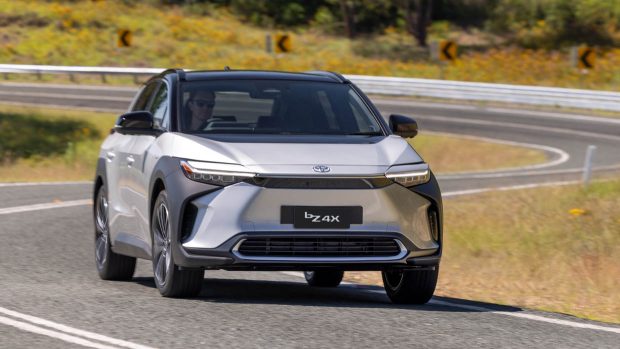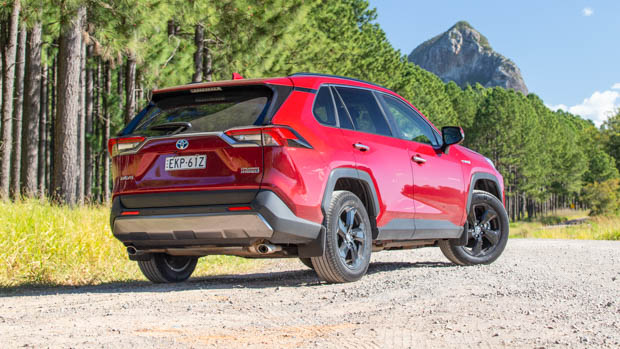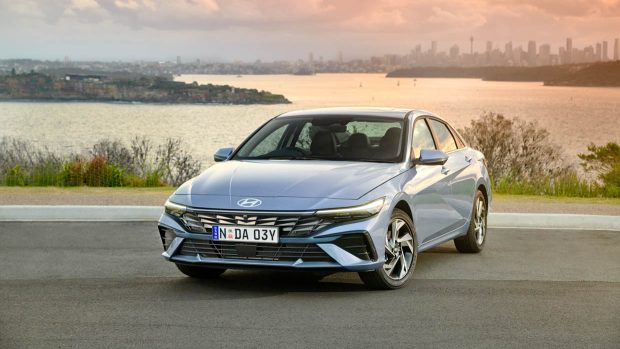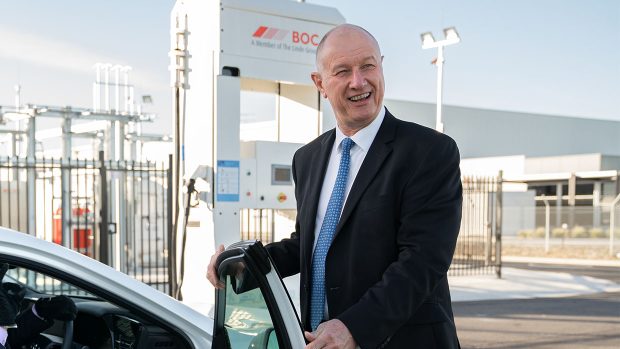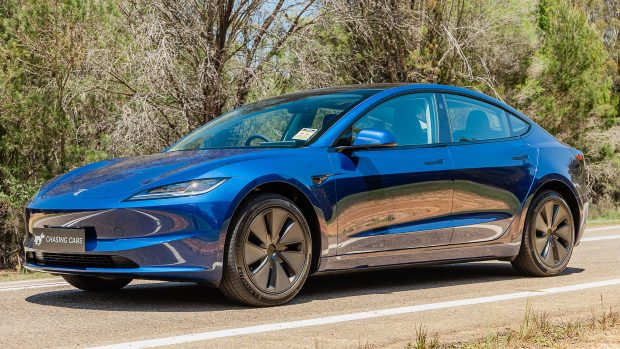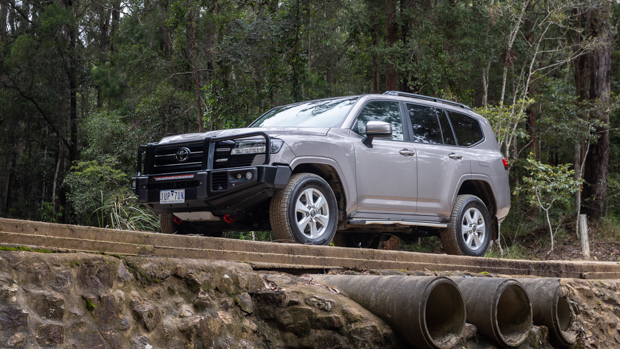-
Car Reviews
- All reviews
- Midsize SUVs
- Small cars
- Utes
- Small SUVs
- Large SUVs
- Large cars
- Sports SUVs
- Sports cars
- Vans
Latest reviews
- Car News
-
Car Comparisons
Latest comparisons
- Chasing Deals
Australia’s best-selling car brand has warned the proposed scheme will result in price hikes for new cars and more buyers hanging onto their old vehicles for longer
Toyota Australia’s vice president of sales and marketing Sean Hanley has slammed the Australian government’s proposed New Vehicle Efficiency Standard (NEVS) scheme and says Toyota will pass on higher prices for high-emission vehicles to customers.
Under the scheme, carmakers who sell enough low-emission vehicles to fall below a fleet average CO2 figure would be able to sell excess ‘credits’ to underperforming brands whose vehicles pollute above the average CO2 number.
Buying credits would allow such carmakers to avoid penalties for breaching the annual CO2 limit.
Despite that, Hanley told media Toyota would not purchase credits from overperformers like Tesla – and has insisted that Toyota would instead slug Australian customers for the CO2 penalties it would be slapped with for selling too many combustion vehicles.
But Hanley’s remarks about Toyota Australia’s position on CO2 credit purchasing were totally at odds with comments made about the same topic, in the same week, by Toyota North America chief executive officer Ted Ogawa.
Ogawa, who runs Toyota’s largest market, told industry journal Automotive News that Toyota North America “would have to prepare something like [emissions] credit purchase” in order to bridge the gap between the US market’s proposed EV sales goal of 50 percent and Toyota’s expected underperformance of 30 percent.
Toyota sold ten times more vehicles in the United States in 2023 than it did in Australia – 2.2 million units played 215,240, so it is reasonable to expect the marque’s policy positions in North America are persuasive throughout the Japanese organisation.
The NEVS is currently being considered by the federal government, with Option A, B and C proposed by the Department of Infrastructure and Transport, ranging from least to most aggressive.
The options differ in terms of how difficult annual ratcheting of limits of CO2 applied across all vehicles sold by a manufacturer in a given year are, and how rigidly and quickly penalties are enforced for not meeting the mandated average.
While the mid-tier Option B appears to be the most likely to pass into law in Australia, multiple carmakers including Hyundai Motor Company Australia (HMCA) and Volkswagen Group Australia (VGA) are lobbying for ‘supercredits’ – where one EV sale is counted as three units – to be included in the plan.
Traditional ‘self-charging’ hybrids – of the kind Toyota has popularised in Australia – are not presently expected to attract supercredits.
Speaking at the launch of Toyota’s first battery electric vehicle (BEV) in Australia – the BZ4X midsize SUV – Hanley said he understood the government’s position and said he supported its intention. But Toyota’s current view is that said the current plan would ultimately hinder the path towards zero emissions vehicles.
“The proposed transition that we’re seeing right now, the timing of that transition is too quick. The trajectory is too steep, especially for large four-wheel-drive SUVs, and light commercial vehicles,” he said.
“It simply doesn’t recognise the technical hurdles, the lengthy time and the substantial costs that will be required to deliver commercial BEVs that are practical, that are capable, and above all, affordable.
“In short, unless the final scheme is less aggressive. It will have a profound negative impact on regional and rural Australia. And that will reverberate throughout the Australian economy.”
In launching its first EV for the Australian market this month, Toyota has a dearth of electric and plug-in hybrid vehicles which would make it easier for the marque to achieve the tough annual CO2 limits under the NVES.
Even with triple-value supercredits, it is unlikely that sales of the BZ4X alone – the brand’s sole plug-in vehicle – would be capable of offsetting the high CO2 scores of some of Toyota’s famed diesel-powered name plates.
Toyota’s situation compares unfavourably with that of Hyundai or Volkswagen – both of which plan to offset the higher emissions of their SUV and commercial products with considerable sales expectations for those brands’ growing EV lineups
The favoured scheme, in Option B, will see car makers charged $100 per g/km over the set targets, with a limit of 141g CO2/km set for passenger vehicles and 199g CO2/km for light commercial vehicles by 2025, in the first phase.
Faced with the choice of either discontinuing the vehicles that breach the threshold, paying credits to other manufacturers with lower-emitting vehicles to off-set fines, Hanly said neither would be considered, the former due to the needs and wants of Australians and the latter as a matter of corporate principle.
“Our governing position right now is that we will need to pay the fines and, ultimately a good portion of that, if not all of that, will need to be passed onto consumers.”
In defence of this position, Hanley pointed to the associated costs that come with developing low- and zero-emissions vehicle technology.
Hanley was keen to point out that Toyota believed Option B was workable with “some alterations to the timing of implementation, and the categorisation”, along with the possibility of a credit system which would allow low emitting vehicles to subsidise heavy emitters in the lineup.
Toyota is understood to be pushing behind closed doors for self-charging hybrids to be included in the supercredit system, even though that isn’t the government’s current plan – which substantially favours plug-in vehicles capable of all-electric running.
Even if the credit system was implemented to Option B however, Hanley said its BEVs and hybrid vehicles would not entirely off-set the emissions of its bigger vehicles.
“The only area of Option B that is difficult, as I’ve mentioned, is not the passenger cars and not the small SUVs. Actually, it’s the large SUVs and the recategorisation of those vehicles into the passenger side of the market,” he said.
The large SUV category in Australia is a catch-all term for both soft-road passenger vehicles like the Toyota Kluger, which are available with hybrid systems, and body-on-frame, diesel powered vehicles like the Toyota Fortuner – even though the ute version of this model in the HIlux is categorically classified as a light-commercial vehicle.
However, other car makers have already outlined a path towards zero emissions commercial vehicles, with Ford poised to introduce a plug-in hybrid Ranger which retains a 3.5-tonne towing capacity. Chinese car maker BYD will also introduce a hybrid and fully electric version of its coming ute.
Closer to home, Toyota in America offers petrol-hybrid systems on both its Tacoma and Tundra medium and full-size utes, along with its Sequoia large SUV – a vehicle which is mechanically related to the 300 Series Land Cruiser.
The Tundra hybrid is expected to fully enter the Australian market in 2025 after its current trial ends and a hybrid version of the Prado is expected to join the new-generation lineup in the coming years. There are no stated timelines for a hybrid Hilux or Land Cruiser, though fully electric concepts of similar vehicles were presented late last year.
The strong language and promise to pass on fines to customers is of notable concern to Australian buyers, given that Toyota accounted for 17.7 percent of the market in 2023 in what was actually a poor result for the dominant manufacturer, compared to its 21.4 percent share it recorded in 2022.
Latest news
About Chasing cars
Chasing Cars reviews are 100% independent.
Because we are powered by Budget Direct Insurance, we don’t receive advertising or sales revenue from car manufacturers.
We’re truly independent – giving you Australia’s best car reviews.
